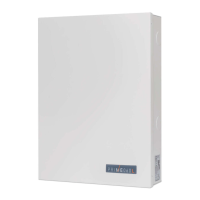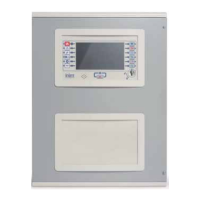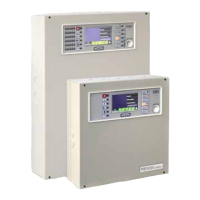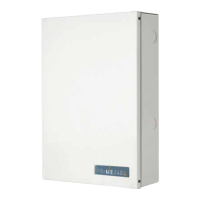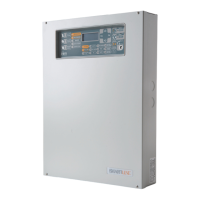User’s manual
Glossary 67
This device allows users to access and control the system. The system readers are
connected to the control panel via the I-BUS.
By means of the readers, each user can arm/disarm the partitions which are common to
both the key and reader in use and can activate shortcuts (refer to Shortcuts) . The key
(TAG) must be held in the vicinity of the reader in such a way to allow the system to read it
and permit access to authorized operations. Although readers provide a more limited access
to the system, they are easiest way of carrying out day-to-day operations (arm, disarm,
etc.).
READER
A pre-set arming configuration which applies various operating modes to the system
partitions.
SCENARIO
The shortcuts are control panel functions which, in a single operation, provide a fast way of
carrying out specific operations which would normally require a series of activations.
They can be activated by the end-user (at keypads, on codes typed in at keypads or on
remote telephones, at readers or on keys) or on the occurrence (activation) of an event.
SHORTCUT
Optical smoke detectors are equipped with sampling chambers (based on light scattering
mass - Tyndall effect). They are capable of sensing the presence of smoke particles and thus
detecting a fire in its early stages.
These detectors have low power absorption during standby. The current absorption
increases during alarm status and thus signals the danger of fire to the control panel.
SMOKE DETECTORS
The “supervision time” is the interval during which the wireless-system devices (in general
wireless detectors in permanent placements) must signal to the control panel that they are
operating in the network. If a wireless device fails to signal before the “supervision time”
expires, it will be classified as “Lost” and the control panel will trigger a “peripheral-loss”
fault event.
SUPERVISION
Detection of a serious condition that jeopardizes the operating capacity of the device
concerned and thus puts the system at risk.
Tamper conditions are detected by tamper switches connected to the system zones,
keypads, readers, expansions and control panel. Generally, these events are triggered by
system violation such as unauthorized opening of a keypad cover.
TAMPER
These are calls sent to programmed contact numbers when specific events start and end
(restoral).
TELEPHONE ACTIONS
This is a service provided by the installer company with the user's collaboration. The installer
connects to the control panel over-the-phone or via a GPRS or Internet connection and, in
this way, can check and/or change the control panel programming data.
TELESERVICE
Screw terminal for the connection of zones (detection devices) or outputs (command/
signalling devices).
TERMINAL
A logical entity for automatic time-management of programmed peripherals or elements.
Prime control panels manage 40 timers.
Each timer can be programmed to manage:
• Two activation times (ON) and two deactivation times (OFF) on preset days of the week.
• 15 timer-slot exceptions. Each exception refers to a specific interval of one or more days,
which can be programmed with an ON and OFF Time.
The timers can be used for different purposes:
• If a timer is associated with a partition, the system will arm and disarm the partition
automatically at set times of the day.
• If a timer is associated with a code, the latter will be allowed to access the system only when
the timer is On.
• If a timer is associated with a key, the latter will be allowed to access the system only when
the timer is On.
• If the “Timer xxx” event is assigned to an output, the latter will activate/deactivate the
connected device in accordance with the On/Off settings of the timer.
No matter how they are employed, the timers must always be enabled by the user.
TIMER
Transceiver-equipped devices
In two-way wireless systems, all the devices are equipped with transceivers. In one-way
wireless systems, the main unit is equipped with a receiver module whereas the peripheral
devices are equipped with transmitters.
TRANSCEIVER
Each code is programmed with:
• A 4, 5 or 6 digit PIN which allows access the system.
• A label which identifies the user (usually the user's name).
• The group of partitions it controls (arms, disarms, etc.).
• A group of pre-set parameters which allow the operator to work on the system in accordance
with its authorized access level (for example, a code can be enabled to consult the events log
but not to change the date and time).
• A hierarchical level, that may allow the user to change to parameters of codes on a lower level
in the system hierarchy.
- User (the lowest level)
- Manager
- Master
USER CODE
List of functions available to the user after entry of a valid code at the keypad.
USER MENU
This device allows the control panel to send voice calls to programmed contact numbers.
In Prime control panels the voice dialer is provided by the SmartLogos30M board (to be
installed on the control panel).
VOICE DIALER

